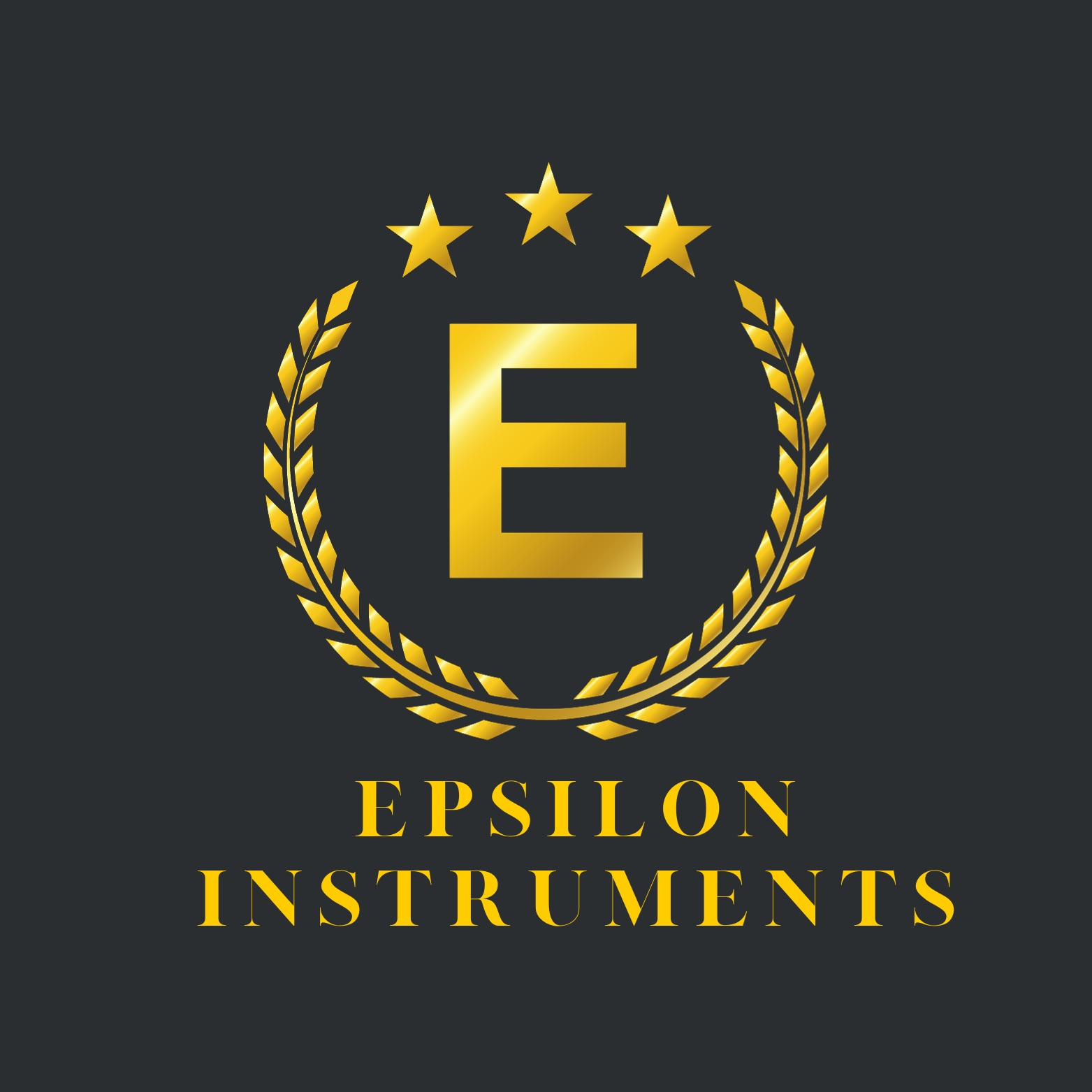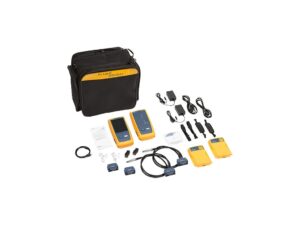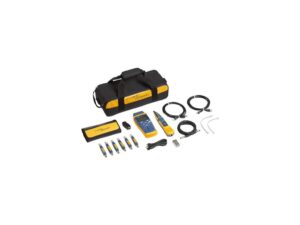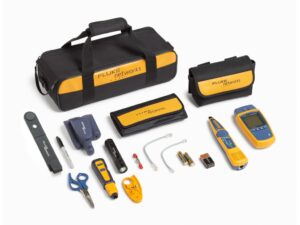Fluke Networks OFP2-200-S1490 – OptiFiber Pro HDR with WiFi (1310, 1490, 1550 nm)
OFP HDR OTDR W/WIFI (1310, 1490, 1550 NM)
Fluke Networks® OFP2-200-S1490 – OptiFiber Pro HDR with WiFi (1310, 1490, 1550 nm)
High dynamic range modules for outside plant applications
Modules are available for multiple wavelengths
Several configurations available – please see Q&A section on this page for more information
Fluke Networks®’ OptiFiber Pro Series OTDRs are designed to make every level of user more efficient whether working in data centers, outside plant, FTTx or PON applications. Novice users can set up and shoot traces in no time by using the Auto OTDR function which analyzes the fiber under test and then chooses appropriate settings. The EventMap feature analyzes traces like an expert, calculating overall loss and reflectance, indicating events such as splices, splitters bends and connectors. Experts can use these settings as the starting point for the Expert Manual Mode to experiment with the trace and uncover details of interest. OptiFiber Pro features an advanced touchscreen interface with pinch and zoom for analysis that’s not only deep, but simple to master.
OptiFiber Pro’s patented SmartLoop capability enables automated testing and analysis of two fibers in a single test in compliance with standards requirements. Not only does this cut the testing time by at least half, but it also allows the tech to immediately see bi-directional averaged test results without moving the OTDR to the far end or using external software.
As a member of the Versiv family, OptiFiber Pro o0ffers a single user interface to cover a wide variety of fiber types and wavelengths: 850, 1300, 1310, 1490, 1550 and 1625 nm along with optional modules for copper and Tier 1 (optical loss) certification and fiber inspection. A single report for an entire job can quickly be generated for all supported media types using the industry standard LinkWare software.
Unique Features:
Taptive user interface puts advanced data analysis, easy set-up and operation at the fingertips of technicians of all skill levels.
SmartLoop OTDR enables automated testing and analysis of two fibers in a single test, eliminating the need to travel to the far end of the connection to perform tests.
Multiple wavelengths support a variety of applications: 850, 1300, 1310, 1490, 1550, 1625 nm.
Splitter detection for automated discovery of splitters. Up to 3 cascaded splitters may be found or manually configured.
Macrobend detection for automatic identification of bends.
Expert Manual Mode – simplifies experimentation which allows you to zero in on the part of the trace that interests you.
Ability to edit or add events – Add 0 dB events, such as perfect splices, not seen by the OTDR or change an event to the correct type: APC connector, a splice or loss event.
Span a portion of a link – allows you to select a segment of fiber for analysis within a longer segment. Span allows you to test only the portion for which you are responsible.
Stackable results and batch processing of traces. When testing many identical fibers at a time, batch processing allows users to look at multiple traces and stack them to spot differences and/or batch edit events quickly.
Compatible with LinkWare Live. LinkWare Live enables you to easily track job progress, get real-time access to results to quickly fix problems in the field, and easily transfer and consolidate test results from the tester to LinkWare PC Cable Test Management Software.
Performance:
Test times as short as two seconds in Quick Test mode
Quickly test datacenter fiber with pre-programmed settings
Auto OTDR modes analyze fiber runs to set key parameters: Range, Pulse Width, and Averaging Time, enabling any user to test like an expert. Expert Manual Mode allows users to easily modify these parameters to zero in on important details
Troubleshoot datacenter fiber links with short patch cables and many connectors because of ultra short dead zones
Easily characterize all connectors, splices and areas of high loss with graphical EventMap view
Pass/Fail certification of fiber optic connector endfaces
Document-only reporting for OSP applications
ProjX management system increases return on investment by reducing errors
Reduce network downtime by quickly and precisely identifying faults on all fiber types
Built-in Visual Fault Locator (VFL) easily identifies damaged fibers
High Dynamic Range (HDR) Modules for Outside Plant Applications
OptiFiber Pro HDR has a dynamic range up to 42 dB and adds new wavelengths for outside plant/FTTx/PON testing requirements. Three wavelengths combinations are available depending upon your requirements.
1310 / 1550 nm
1310 / 1490 / 550 nm
1310 / 1550 / 1625 nm
OptiFiber Pro Series OTDR
OptiFiber Pro OptiFiber Pro HDR
Models in Series OFP2-100-M (850, 1300 nm)
OFP2-100-S (1310 1550 nm)
OFP2-100Q (850, 1300, 1310, 1550 nm) OFP2-200-S (1310, 1550 nm)
OFP2-200-S1490 (1310, 1490, 1550 nm)
OFP2-200S1625 (1310, 1550, 1625)
Application Enterprise, Datacenter, Campus FTTx, Outside Plant, PON, POLAN, Access
Wavelengths 850 nm
1300 nm
1310 nm
1550 nm 1310 nm
1490 nm
1550 nm
1625 nm
Compatible fiber types 50/125 μm, 62.5 μm,
Singlemode Singlemode
OTDR Port Connector Cleanable UPC ferrule with removable SC adapter Cleanable UPC ferrule with removable SC adapter
Supplied Test Cords Launch Fibers for testing LC systems 2m TRC for testing SCAPC systems
OTDR types Auto, Datacenter, Manual Auto, Auto PON, Manual, Manual PON
Event Dead Zone 850 nm: 0.5 m (typical)
1300 nm: 0.7 m (typical)
1310 nm: 0.6 m (typical)
1550 nm: 0.6 m (typical) 1310 nm: 0.7 (typical)
1490 nm: 0.7 m (typical)
1550 nm: 0.7 m (typical)
1625 nm: 0.7 m (typical)
Attenuation Dead Zone 850 nm: 2.5 m (typical)
1300 nm: 4.5 m (typical)
1310 nm: 3.6 m (typical)
1550 nm: 3.7 m (typical) 1350 nm: 4 m (typical)
1490 nm: 4 m (typical)
1550 nm: 4 m (typical)
1625 nm: 4 m (typical)
PON Dead Zone N/A 30 m (typical)
Dynamic Range 850 nm: 28 dB (typical)
1300 nm: 30 dB (typical)
1310 nm: 32 dB (typical)
1550 nm: 30 dB (typical) 1310 nm: 42 dB (typical)
1490 nm: 41 dB (typical)
1550 nm: 41 dB (typical)
1625 nm: 40 dB (typical)
Reflectance Range 850 nm: -14 dB to -57 dB (typical)
1300 nm: -14 dB to -62 dB (typical)
1310 nm: -14 dB to -65 dB (typical)
1550 nm: -14 dB to -65 dB (typical) 1310 nm: -14 dB to -70 dB (typical)
1490 nm: -14 dB to 70 dB (typical)
1550 nm: -14 dB to -70 dB (typical)
1625 nm: -14 dB to -70 dB (typical)
Sampling Resolution 3 cm to 400 cm 3 cm to 2 m
Sampling Points Up to 64,000 Up to 129,000
Expert Manual Mode Yes Yes
SmartLoop with on-board Bi-directional averaging Yes Yes
Macrobend detection Yes Yes
VFL Yes Yes





Reviews
There are no reviews yet.